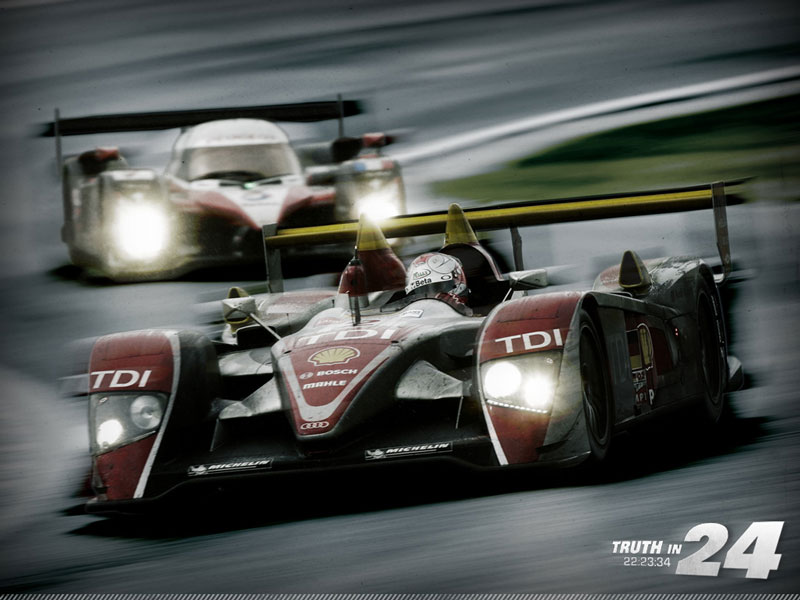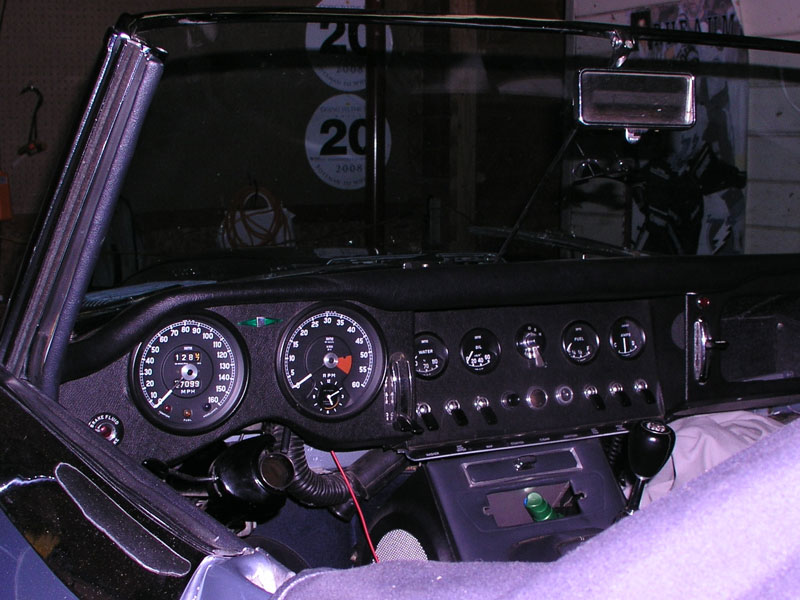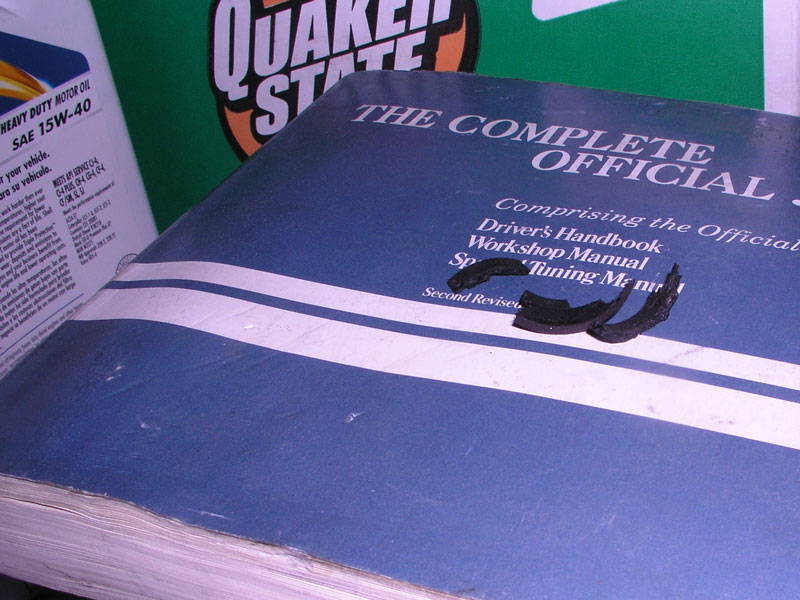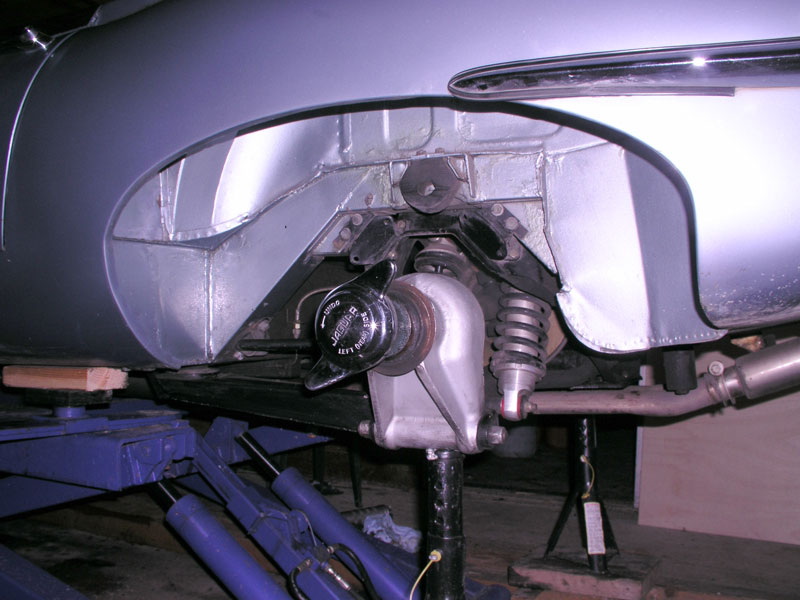
I saw this machine at the ‘Cruizin to Colby’ car show in Everett, WA. I can’t recall what car(truck) was attached to the hellish paint job.
goolsbee.org, serving useless content from an undisclosed location since 1997

I saw this machine at the ‘Cruizin to Colby’ car show in Everett, WA. I can’t recall what car(truck) was attached to the hellish paint job.

This one slipped by me when it hit the inter tubes nearly a month ago. I wrote it back in February or so, shipped it off to my editor, and promptly forgot about it. My editor’s wife gave birth to their first kid, and my editor’s life changed far beyond his expectations (though in my defence I did warn him!) Anyway, after a delay it finally published early last month. TechTarget shuffles their site around so much that my RSS feed reader obviously has lost track, otherwise I should have been automatically notified. Oh well better late than never, here’s my take on what I considered to be the most important point of Datacenter Pulse’s “Top Ten” list for the industry (though they put it at #7, oh well):
Users demand SNMP standard-based monitoring for data center power and cooling equipment .
Yes, it is way off the beaten path my blog readers are accustomed to, but I do use some analogies you can understand!
And no John, I didn’t specify SNMP v3, if only to keep it simple. These are HVAC & Electrical guys, so I have to ease them into a new way of thinking first before I can get specific. 😉

I just finished watching Truth in 24, and if you are a geadhead I have to say you owe it to yourself to watch. The 24 Hours of Le Mans is for me the only truly compelling event in motorsports. F1 just seems way too technical, delicate, and overdone. NASCAR reminds me of driving down the freeway, only with just left turns and more noise. Indy seems like an anachronism, or open wheel NASCAR. Le Mans however is completely different. It has deep history, combined with all the technicality and strategy you could imagine. They race, balls-out, rain or shine, in daylight and darkness, at speeds that boggle the mind, on a course made partially from public roads. The cars are all radically different, with four completely different classes on course simultaneously. The machines have to have seriously high top-end speed, while still being able to brake and turn at very low speeds. Best of all, the race is not a fixed distance, but merely hours on a clock. Endurance. The car has to be built to last, and the crews have to be able to keep it running, or rebuild it on the fly. Teamwork is vital. Engineering is critical. Driving skill is tested. Survival is as important as speed.
One item on my “bucket list” is to attend the event, by DRIVING there, ideally in the 65E. Meanwhile I have Steve McQueen’s iconic and epic Le Mans, and this wonderful documentary, Truth in 24. While nowhere near as compelling as McQueen’s classic, it has perhaps even better photography, which is saying a lot. It follows the 2008 Le Mans event from the perspective of Audi’s R10 teams. Despite having dominated Le Mans with their R8 and R10 cars over the past decade, Audi was viewed as the underdog last year as Peugeot had their Diesel-powered 908 HDI prototypes. The Peugeots were 3.5 seconds faster per lap around Circuit de la Sarthe. While that may not sound like much, over 24 hours that adds up to a daunting lead. How the Audi team pulls off a win is documented in this film. The difference at the end comes down to one decision, by one very tired engineer, who is being second-guessed by everyone at the moment, but he sticks to his guns. To show how truly grueling this event is, he savors his victory by walking to a quiet place and sitting down to rest, outside the whirlwind of everyone else spraying champagne.
My only complaints about this film is the obvious hand of Audi’s marketing department, and the trademark ‘NFL Films’ style and soundtrack, but if you can do your best to ignore those and soak in the excellent photography and the raw, “unedited for cleanliness” character of the people, the cars, and the emotions you really get a sense of the endurance part of endurance racing. It impossible to watch all of the event, but this film comes very close to doing so, albeit from the perspective of just one team.
One highlight that sticks in my mind, which oddly is not at all visual, but is just a straight sequence where driver Alan McNish takes us on a “guided tour” of the course, while sitting in a chair and watching a video taken from a car on-course. He relates the gear changes, the speeds, the line of the course, which apexes to hit, and which once to miss, where the car will fight you, and where you have to let it go. The video shown is taken at speed and the rate at which the course comes at you is mind-bending. He relates it all in real-time and is breathless by the end. Now imagine doing that for hours on end, through rain, darkness, harsh low-angle sunlight, and traffic.
Amazing.
Another highlight is a passage near the beginning where they briefly talk about the amazingly quiet TDI engine. The Diesel race cars are shockingly quiet. To anyone accustomed to the scream and roar of a typical race car going by the silent “whoosh” of the TDI is startling. More startling as “quiet” is not usually the first thing that comes to mind when you think of Diesel! Ulrich Baretzky, the head of the development of this engine says something very interesting in the film: “Noise is a form of energy, the less you hear the more you use in propulsion.”
This film is being shown on cable TV here in the USA, but best of all you can download it for FREE from Apple’s iTunes Store.
If you want a preview, head on over to the film’s official website: www.truthin24.com.
(Thanks go to reader Wil Langford for pointing me to this!)

Taking this bonnet theme to the extreme, here’s a car we’ve seen before, from a different angle.

In an hour here, and an hour there I’ve snuck out to the barn to work and tinker a bit with the 65E. My primary job is to get the filthy thing cleaned up for Spring. Between fits of that job, I’m trying to start a few minor repairs. The most annoying issue for the past year has been a wobble in the steering column. It has gotten to the point where i can’t take another frikking minute of it and I have to get it fixed before I’ll drive the car again.
Before last night I figured I’d narrowed it down to bushing failure in the upper steering column. Last summer on the GTTSR I crawled under the dashboard at a rainy rest stop and confirmed that the u-joint and lower column were OK. Mark Collien my co-driver helpfully shot this photo of me in this ridiculous position:

I should have addressed this last winter but never got around to it. Last night I went at it. With the car on the lift it actually became an easy task, as the steering column is already above my head. A few minutes with a flashlight and a few ½” combination wrenches and presto! The steering wheel is out, and here is all I found left behind:

The above bits fell out onto the floorboard, or were fished out of the steering column bracket. Looking at my shop manual, also known as ‘The Bentley Big Book of Lies’ (pictured above holding up the bushing bits) it shows that the column is supposed to be held still by two clips, four rubber washers, and two felt bushings. “Except for later cars, where two rubber bushings are used.” Of course no indicator whatsoever as to how a “later car” might be defined. Given that the E-type was in production from 1961 through 1974 it is hard to pin down exactly when “later” could be. My ground up rubber leavings could be a bushing OR a washer. Who knows?
So I turned to the Learned Elders of the E-type forum/list onJag-Lovers.org. If anyone can help, they can.
They’ve helped beyond my wildest dreams.
They narrow down Mr. Bentley’s vague generalization to a specific time-frame, namely the Series 1 switch from 3.8 to 4.2 engines. This happened 715 cars before mine was built, specifically in late 1964. How three years after the beginning and ten years before the end is considered “late” by Bentley boggles my mind, but there you have it. The joys of classic car ownership.
But wait, there’s more! Not only did I find that I needed two rubber bushings (not the felt+rubber+clips) but that a guy on the list named Keith had a spare set and he’d send them to me for the cost of postage. So by the weekend I should have the steering column back together again, and wobble-free.
This proves once again that old cars are a great destroyer of social barriers. Having an old car is a ticket to a kinder, gentler era, where people are friendly and don’t hesitate to help you out when you are in need. Like Todd Sudick in Priest River, Idaho, who helped me when a bolt fell out of my brake caliper. Even when not on the road the community that surrounds old cars is always here to help. Wonderful.
Cleaning continues, with all the wheel wells done:

Along with scrubbing off lots of road grime, I also gave all the suspension bits and wheel bearings their yearly greasing. Next I raise the car up a bit more and clean off the visible parts of the underside: exhaust resonators, rocker panels, etc. Finally I’ll grease the splines, re-mount the wheels, put her on her feet again, polish up the cam covers, clean the glass, and the interior. And then…
…go get it dirty all over again!

My car has been running poorly of late. Nothing serious, just not feeling like it should. A bit of power loss, really. But mostly the symptom I noted was crappy fuel economy. Mind you, what I consider “crappy” most people would kill for: 43-46 MPG. That is way off the usual 50 MPG that my TDI routinely delivers.
On the NWBioDiesel network discussion mailing list the subject of dirty EGR valves came up and “Dr. Dan” of Dr. Dan’s BioDiesel in Seattle noted the following:
As far as I can tell if the mass air flow meter is healthy the intake will not plug up!!!! There is an updated part that works better than the original for 1999 to 2004 ALH motor (non PD) # 0281 002 757. This is one of the most important sensors of the engine, it effects power, mileage, emissions and can cause the intake to plug up with excess egr. When we change an air filter we look to see if the car still has the old style MAS if it does we look in the intake to see how plugged it is, if it is starting to plug up we test install a new MAS. If the car runs better we leave it on and that seems to stop the intake from plugging up more. If your car has the other older MAS it could be smart to replace it with the new part.
I figured this may have been the cause of my clogged ECR & Intake last winter, so I called my local VW breaker and asked for part #0281 002 757. They had one so I told them to set it aside for me. Once home it took all of 3 minutes to swap the part: two phillips head screws and one plier-operated hose clamp. The transformation is amazing!
It is like I have my old car back. No power loss (mind you 90HP isn’t a lot of power to start with, but I digress) but best of all, my first half-tank since the swap:
FIFTY-TWO POINT FOUR MILES PER GALLON.
367 miles on exactly 7 gallons of fuel.
Oh yeah. 52.4 MPG. That’s all on home-brew BioDiesel and my normal driving style, which is kindly described as… lead footed. Once the warm weather comes back in earnest I’ll have a go at HM’ing my way to max-MPG and report here.
If you have a pre-Pump Duese TDI and your MPG has fallen off and the car seems a bit sluggish, try swapping this MAS in (and clean your EGR & Intake) and see what happens. You’ll be a happy TDI owner again!

An easily recognizable icon, I bet even John Welch can identify it closer than “A silver-gray one with a black stripe and a “427” on it.”
Let’s all sit back and see.
By the way, as much as it is nice to have perfectly clean, washed, and waxed, reflective paint to shoot, I REALLY like the dusty rain splatter on this car’s hood. It gives it a gravitas of purpose. From those elongated impact marks you can almost hear the rumbling 427 propelling that plastic machine forward through the hostile elements of some lonely two-lane highway, hurtling towards the vanishing point on the horizon, where the sun awaits beyond the storm.
